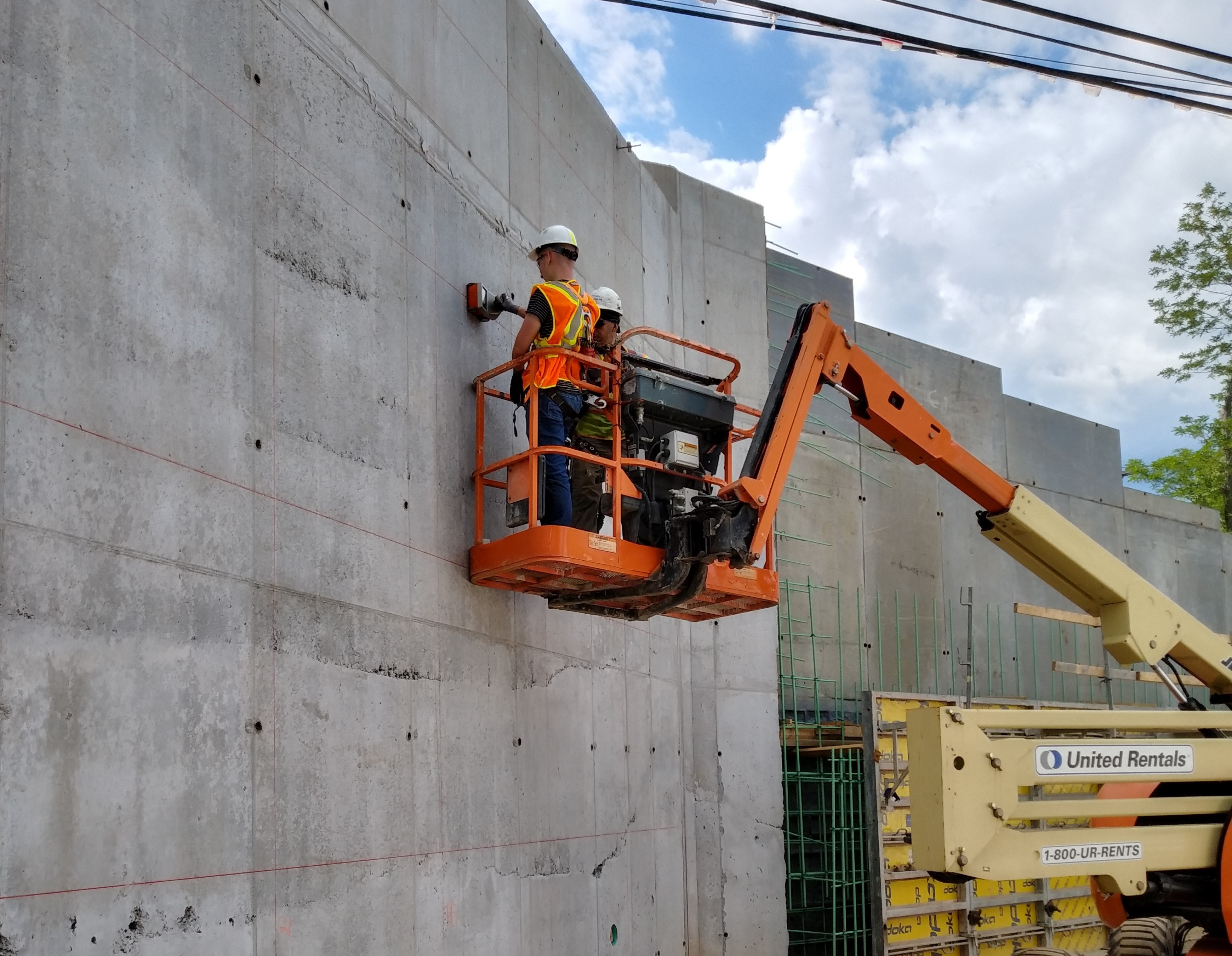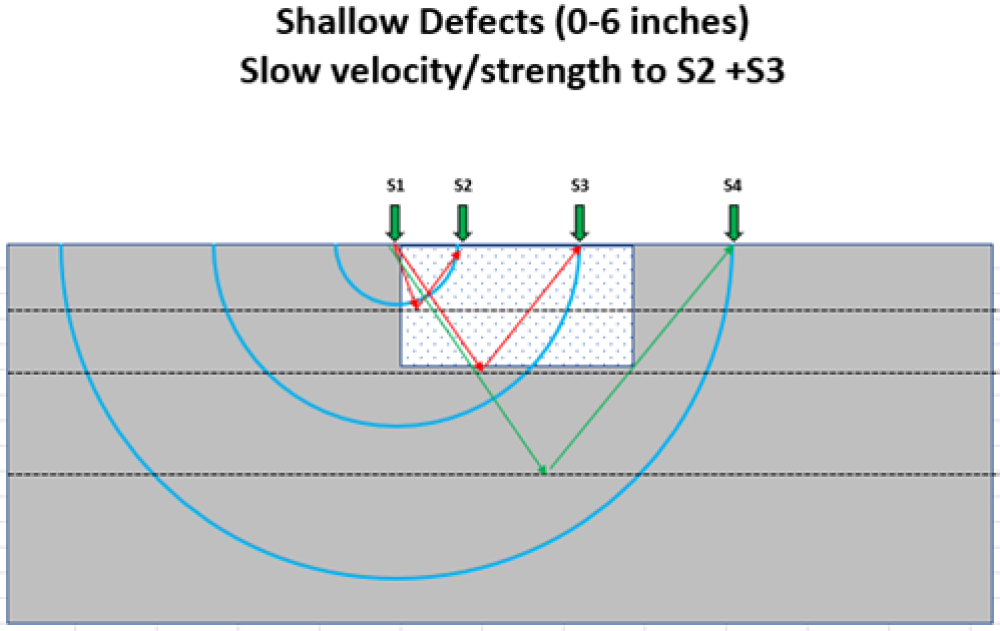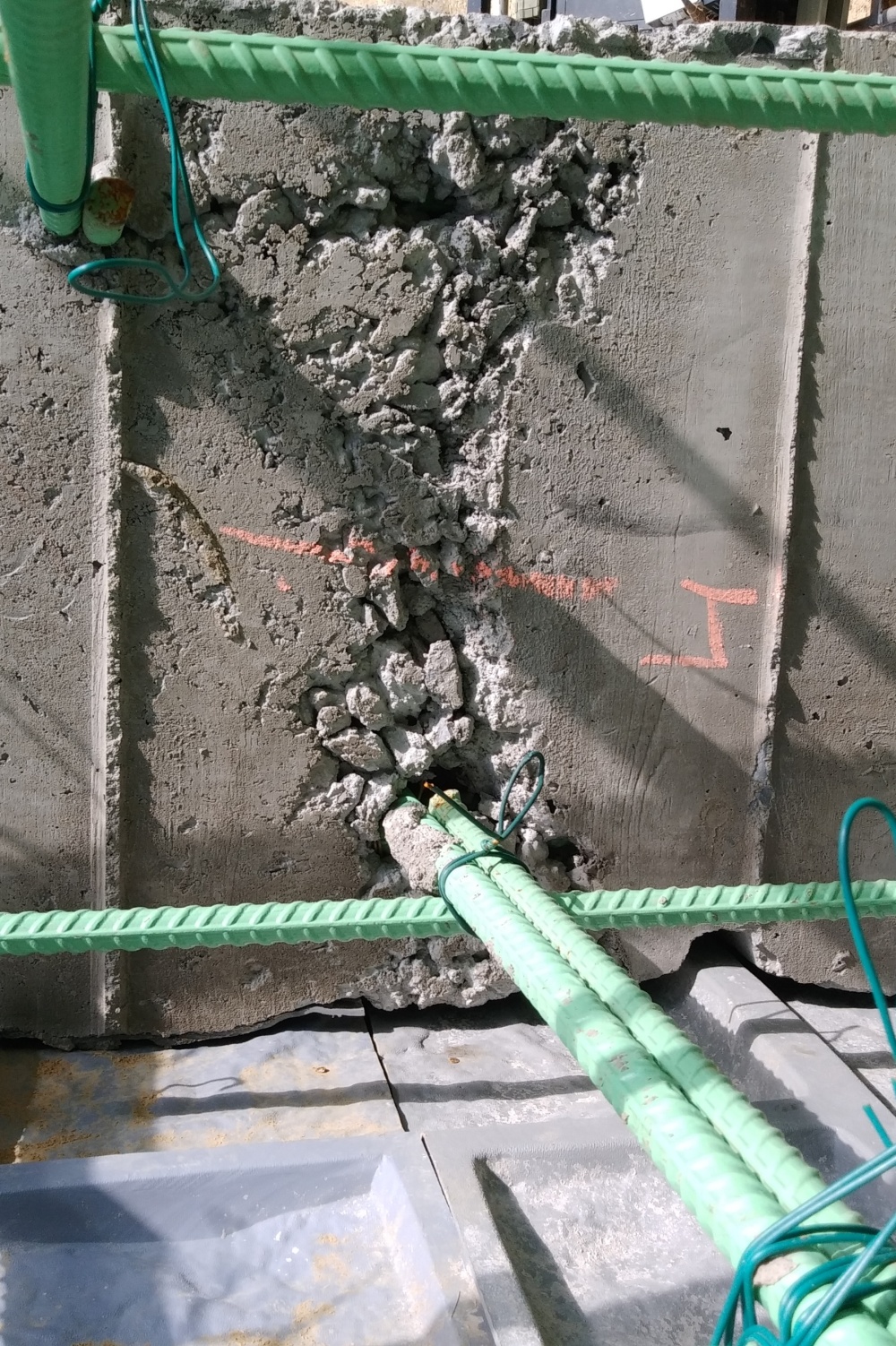Investigating the Structural Integrity of a Concrete Bridge Abutment | New York, USA


Services Applied by VCS Engineering
Summary
During construction of new concrete bridge abutments in Cornwall, NY delays in concrete placement resulted in visible defects such as cold joints, segregation, and honeycombing when the formwork was removed. The contractor wanted to quantify the depth and severity of these visible conditions. NDT Division's impact echo/pulse velocity (IE/PV) surface and through testing measurements were conducted to assess the bonding between various vertically placed lifts of concrete and the extent/depth of voiding. The concrete strength of the abutment was compared to the strength/bonding roughly 6” and 9” from the surface. NDT Division's results quantified the approximate depth of these consolidation defects and determined that these concrete placement defects were surficial, and the integrity of the newly placed abutment was satisfactory.
Scope
The concrete formwork was removed from a recently poured concrete bridge abutment in Cornwall, NY. Voiding and honeycombing was visible on the surface. These construction defects were attributed to delays between concrete trucks and poor consolidation techniques during placement. The engineer wanted to quantify the integrity of the new concrete abutments based on this observation. NDT Division was contacted to assess the bonding between the horizontal cold joints and determine the extent/depth of visible voiding from honeycombing.

NDT Division marked out a 5 ft grid on both faces of both abutments prior to beginning any testing. Ground penetrating radar (GPR) was used to determine the actual cover depth of the steel reinforcement bars. Next NDT Division conducted impact echo/pulse velocity (IE/PV) testing on the grid lines to determine the in-situ concrete compressive strength on the concrete surface and at a depth of 3 in., 6 in. and 9 in. IE/PV data was also collected across the visible horizontal cold joints to determine if there was sufficient bond between the concrete layers. Finally, at select locations IE/PV through testing was conducted by placing the energy source on the front face of the abutment and placing the sensors on the back face of the abutment prior to backfilling which quantified the internal strength of the abutment stem.
Solution
IE/PV data collected by NDT Division was able to quantify there was sufficient bonding between the various vertical lifts of concrete. This was confirmed by measuring the velocity of energy waves when sensors were placed on both sides of the horizontal cold joints. Additionally, the weak concrete strength on the abutment surfaces did not extent significantly beyond the 3-4” depth range. Acceptable concrete strengths were documented at and beyond 6” deep. The IE/PV testing results along with concrete cores at pre-selected areas help engineers determine the concrete in both abutments was determined to be satisfactory and was not rejected by the bridge owner. The honeycombing and voids were only a surface issue not an issue deep into the concrete element.
